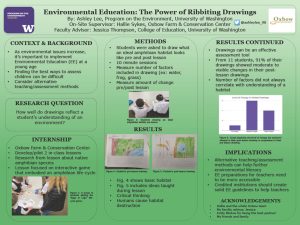Environmental Education: The Power Of Ribbiting Drawings
As environmental issues increase, there is a push to implement environmental education at a young age. Finding the best ways to teach environmental education to a younger audience successfully is something we are still trying to figure out. To look further into this issue, I conducted a study to find out how well drawings reflected a student’s understanding of a habitat. This led me to the question of whether drawings can be used as an effective assessment tool. To accomplish this, I worked with Oxbow Farm & Conservation Center to develop and pilot an inclass lesson. The in-class lesson focused on the local amphibians found in the Snoqualmie Valley. During the lesson, I asked the students to draw what they thought an ideal habitat for an amphibian would look like pre and post lesson. While my study was done with a small number of students, it was still clear that their drawings reflected that they understood what factors are needed for an ideal amphibian habitat. Many of the students’ post-lesson drawings had moderate to visible changes that included factors that were taught during the lesson. Seeing that the drawings were an effective way in assessing learning, non-traditional teaching methods like this should be explored more. Further assessment guidelines should also be created to increase successful environmental education in the classroom.
